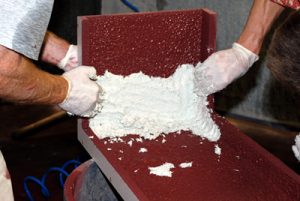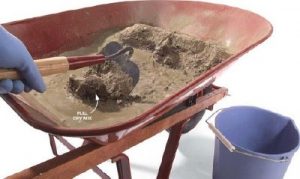The world is ever changing and part of the change is the creation of different kinds of infrastructure projects that will make it possible to attain development. That is why, in any development, concrete is something that plays a vital role. It is in fact one that plays a centric role when it comes to the circular economy in general. As concrete is being used, you see schools, hospitals and different offices that are seemingly sprouting everywhere.

Thus, concrete should be seen as something that is bringing about developments to those who know how to maximize its use. It is one that is perhaps an integral aspect of what the world really needs. There are so many important benefits of concrete and that understanding such will give you a bigger overview of the benefits it carries.
The Role Of Cement And Concrete In The Circular Economy
The question is: what is our role in the circular economy, and what do we realistically have to offer?
-
Raw materials: Did you know that the raw materials that we use (limestone for cement and aggregates for concrete) are abundantly available in Europe? This is important, as we are not extracting and using scarce raw materials.
-
The cement manufacturing process: It probably comes as no surprise to hear that we use primarily coal and petcoke in our kilns. But what you may be less aware of is the fact that we are able to replace part of these traditional fuels with fuels and biomass derived from waste. Not only does this form of energy recovery reduce our dependence on fossil fuels, we are also able to recycle the ash back within our process. Our main energy sources are : petcoke, oil are the primary fuels with which we fire up our kilns; that, you know; what is probably new to you is that the cement industry in Europe takes a pioneering role in recovering energy and recycling material from waste in an operation we call “co-processing”
-
Concrete: Concrete is in fact made up of cement, water and aggregates (gravel, crushed stone, sand, recycled concrete). And guess what: concrete is 100% recyclable and can go back into concrete as a recycled aggregate or into other applications (e.g. road base). Another interesting fact is that concrete is such a durable material that structures can last for decades, or even centuries! We have all heard of the Channel Tunnel, but what you probably did not know is that the concrete used to build it is contractually guaranteed to last at least 120 years! Visit main article source…
Additionally, if you wish to benefit so much from concrete, then you need to know the practical uses of such in your home. As a homeowner, you can see that concrete can be used to make concrete countertops, and when you partner it with precision grout, and then it is certainly going to make you realize that you’ve made an ideal choice at the very first glance!
Can I Use Non-Shrink Precision Grout to Create Concrete Countertops?
NSPG and Concrete Countertops
This is part of the problem with using NSPG for countertops. With the oridnary applications that NSPG is intended for, usually not much of the grout’s surface area is exposed to the air, so drying occurs slowly. With a countertop made out of NSPG, there is a huge amount of surface that can dry out. Thus any early expansion that would normally counteract the inevitable shrinkage is overwhelmed by the excessive amounts of shrinkage caused by rapid and continuous drying.
Countertops are large, flat beams with large amounts of surface area exposed to the air, so drying becomes a serious issue. As concrete dries and loses moisture, the capillary tension created by the water in the fine pores causes volumetric shrinkage. It is the loss of internal water that causes the shrinkage. The longer the concrete is allowed to dry, the more shrinkage will occur. For larger pieces of concrete, drying shrinkage can continue for years. Even very thin pieces of concrete will continue to shrink over time, as will be seen below. View more details here: http://www.concretecountertopinstitute.com/blog/tag/cement/.
So remember that, concrete will give any infrastructure project that you are making the durability as well as longevity that it must carry with it. Thus, you can certainly reflect on the value as well as that of the importance of the product in whatever it is that you are using it for.
Image Credits: http://www.concretecountertopinstitute.com/blog/wp-content/uploads/2012/04/gfrc_red_mist_white_backer.jpg.




